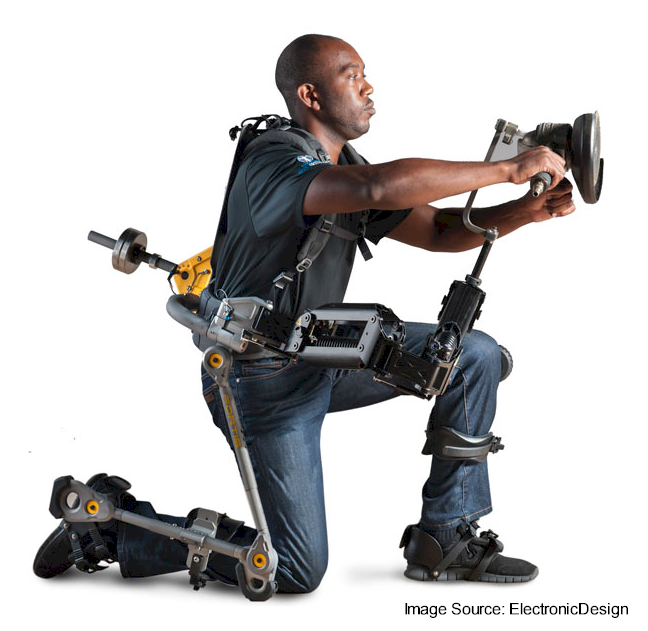Exoskeletons: Reality in Manufacturing or Science Fiction?
Written by: Elisha Lemoire, CCPE, Managing Ergonomist
Mechanical exoskeletons combine a technology of robotics and information systems to form an outer framework for the human body that has predominately focused on military and rehabilitation applications. Lately, exoskeleton research for industrial applications is one of the fastest growing areas of interest. The primary industries adopting exoskeleton concepts are automotive, aviation, shipbuilding industries, medical facilities and industries requiring heavy lifting.
Various exoskeletons are available including exoskeleton arms, wearable suits, chair-less chairs, gloves and the most recent prototype phase of supernumerary exoskeletons. Regardless of the type, exoskeletons are designed to assist workers by supporting weight of tools or parts, assist with static/prolonged postures or simply allow workers to perform tasks easier and more efficiently.

We have worked with our clients to integrate exoskeleton equipment into various industrial settings to evaluate worker impact. We have specifically trialed the Levitate Airframe that transfers the weight of the arms from shoulders, neck and upper back to the core pads that rest on the hips. This exoskeleton is applicable for workers who perform repetitive arm motions and/or static above shoulder postures. An 8-week case study shows the most successful use of the equipment were jobs involving a large percentage of sustained non-neutral shoulder postures and jobs involving more transitions between neutral and non-neutral shoulder postures were less successful. Results also demonstrated a lower shoulder rate of perceived exertion (RPE) for the majority of workers in their respective jobs, however, 72% of workers opted to discontinue use of equipment due to discomfort outweighing the perceived shoulder benefits. Common concerns included job interference, fit, restriction of movement, heat, and the comfort of the equipment. Although Exoskeletons are becoming more feasible in industrial settings to aid in prevention of musculoskeletal disorders the design and technology still require modifications and user trial feedback before it will be a successful everyday presence in manufacturing.
When integrating exoskeleton equipment, an Ergonomist’s input is required to ensure no new risks are created. An Ergonomist can help facilitate trials monitoring objective performance while obtaining subjective user feedback which can determine benefits, equipment limitations, job suitability and practicality. Options Incorporated provides this critical analysis and participate approach to develop the parameters for effective integration of exoskeleton equipment while determining the benefits and/or limitations of its use. According to Dr. Leonard O’Sullivan a specialist in Ergonomics and Product Design at the University of Limerick in Ireland indicates “we’re not looking to make super-heroes. We want to develop a helper that supports production workers in their everyday work and keeps them healthy”.
Feel free to contact us if you would like to learn more about potentially integrating exoskeletons.
Contact Us Back to Articles